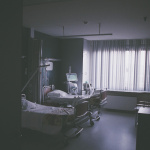The executive branch, and in particular the head of state Emmanuel Macron, have made it quite clear: the beginning of spring promises to be difficult. One year after the first national containment, the virus is actively circulating in France, and with good reason: the country must now face up to the threat of more transmissible variants of the coronavirus, which are leading to an increase in contaminations. The battle is being waged on two fronts:accelerating the vaccination campaign and limiting the spread of covid 19.
Coronavirus: defense council on Wednesday, June 2 on vaccinating teenagers and decontamination
While the coronavirus epidemic seems to be slowing down in France, a new health defense council is meeting this Wednesday, June 2, 2021, to study the 3rd phase of decontainment and vaccination during the summer and teenage vacations. What can we expect? [Read more]
For the time being, the government prefers to opt for local, less stringent measures than those we have seen in the past. 19 départements have been placed under hybrid containment, and curfews have been delayed by an hour across the country to coincide with the switch to summer time. This is an attempt to avoid a national lockdown and the psychological and economic consequences of even the most drastic measures.
Containment: departments at risk of tighter restrictions
As the coronavirus epidemic continues in France, the government has decreed local containment in 19 départements. However, the list could well grow longer. So which departments will be confined next? Here's what the latest figures show. [Read more]
But will this be enough to avoid strict reconfinement in France in 2021? In principle, the impact of the new local restrictions that came into force on March 20 should already be measurable. The first effects should then be visible after two weeks.
If hospital tensions are high in the worst-affected departments, the prospect of being able to carry out medical evacuations, i.e. transfer covid patients to areas relatively unaffected by theepidemic, could help counter the problem of high occupancy rates. However, if hospitals nationwide are approaching saturation point, then the decision may be unavoidable. On March 23, 2021, the occupancy rate in the intensive care unit was 91.6%. This is higher than when the decision on the second containment was announced: on October 29, 2020, it was 62.2%. In the Île-de-France region, hospitals estimate that their capacity will be exceeded within a fortnight.
Hospitalisations in France this Friday June 30, 2023: occupation rate of intensive care beds by region
Data on the coronavirus situation in France continues to be closely monitored. This Friday June 30, 2023, 9.47 % of intensive care beds in France are occupied. [Read more]
Coronavirus: younger sick hospitalized in ICU, clear increase in admissions
As the positive effect of vaccination starts being noticeable in nursing homes, more and more young people are hospitalized in intensive care units. There are even twice as many of patients under 50, and without comorbidities since January 2021. Over the past eight days, the phenomenon has been increasing, so much that the regional health authorities and the government are highly concerned. [Read more]



 Coronavirus: defense council on Wednesday, June 2 on vaccinating teenagers and decontamination
Coronavirus: defense council on Wednesday, June 2 on vaccinating teenagers and decontamination


 Containment: departments at risk of tighter restrictions
Containment: departments at risk of tighter restrictions


 Hospitalisations in France this Friday June 30, 2023: occupation rate of intensive care beds by region
Hospitalisations in France this Friday June 30, 2023: occupation rate of intensive care beds by region


 Coronavirus: younger sick hospitalized in ICU, clear increase in admissions
Coronavirus: younger sick hospitalized in ICU, clear increase in admissions














